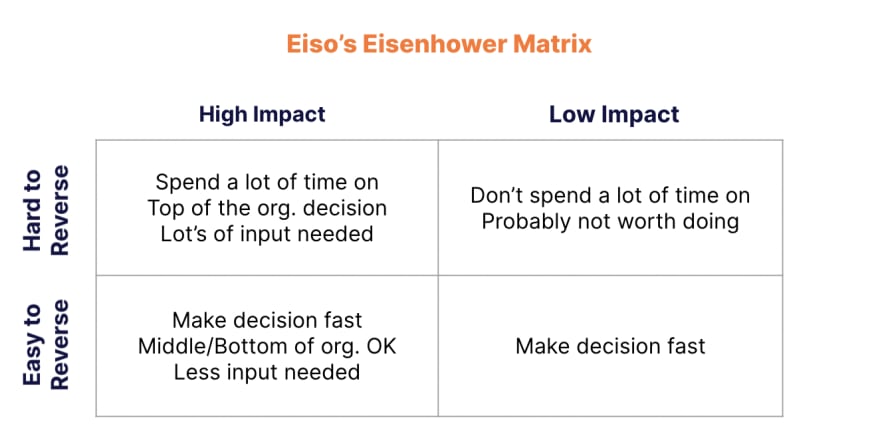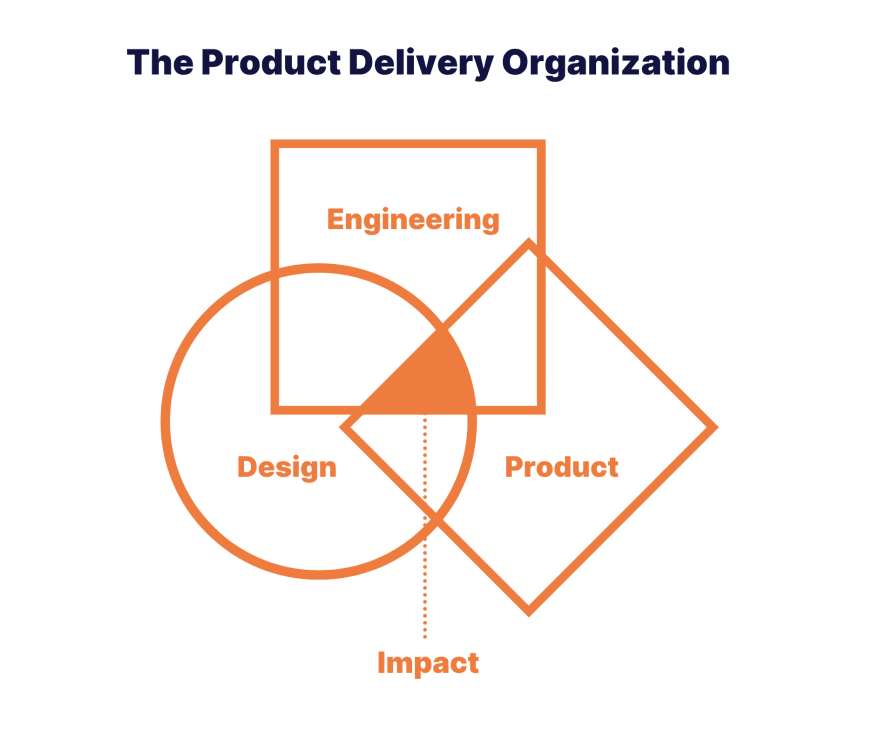Decision-making is an indispensable skill for engineering leaders. In any company building software, engineering is where the rubber meets the road, and your decisions (short, medium, and long-term) will have the biggest impact on the business.
We often ask ourselves, "how can we be deliberate about the culture of our organization, so we don't end up pushing for outcomes without caring about how we achieve them?" – that's why I believe that "how we make decisions" should be one of the greatest building blocks of company culture.
I've argued that engineering leaders need to adapt their leadership approach as their company grows. So shouldn't decision-making also be flexible and easy to adapt?
Yes.
In this article, I will present a few practical frameworks and tools that you can use to help guide your decision-making.
These frameworks will help you understand:
Who should make certain decisions, and how fast.
What's the approach at different stages of the company.
Which questions should always be top of mind for engineering leaders.
Most of these frameworks come from the fantastic conversations I’ve had with Jason Warner (former CTO of GitHub) and other Engineering Leaders on our podcast.
This is not a magical guide to decision-making, but a simple toolkit from which you can pull out different frameworks. Ideally, these tools are woven into your company culture, and become daily, weekly, and monthly knee-jerk reactions to some of the questions that inevitably come along.
As you read through this list, remember: There are many times when you need to make a decision. But it's the art of the decision, not the science and mechanics of the situation, that matters. That's where excellent leaders are made.
1. The Jason Warner Diamond
Use for 👉 Creating a decision-making structure within your org. that fosters transparency and trust by assigning different decision-making parameters based on job levels.
One of the most important aspects of any function is decision-making. Jason Warner’s Diamond (widely discussed in Episode 3 of Developing Leadership) is a framework that can help bring more clarity to organizations by showing us what kind of decisions are being made at the different job levels.
The Diamond challenges the notion of “tops down” and “bottoms up” decision-making:
A set of all decisions will always originate from the top (one-way door, strategic, exec only) and bottom (majority of tactical decisions, ephemeral or transient choices, experimental mindset decisions).
The decisions in the middle are many that translate the tops-down decisions into action and make sure the bottom-up decisions map to the overall strategic direction of the company. If there are mismatches, the diamond middle is where it would likely originate.
It can be hard to accept a structure where decision-making isn’t always coming from the top, but if there is an immense amount of trust, this can be genuinely liberating as it leads to quicker decision-making processes, which, you guessed it, will help your company scale.
Jason believes that companies should not rely on an all tops-down approach or all bottoms-up approach. Instead, each organization needs to find a balance between the two approaches in order to achieve its goals.
TL;DR: Most decisions in a company originate from the top and bottom of the org, but most of the actual decision-making happens in the middle of the organization. Embrace this and you will be able to scale faster.
2. The Eisenhower Matrix
Use for 👉 Deciding how much time and how many people need to be involved in a decision before embarking on it.
The Eisenhower Matrix is a decision-making tool created by Dwight D. Eisenhower, who believed that there were two aspects that define decisions: important/non-important or urgent/non-urgent. Adopting the practice of using this matrix, or variations of it, for work decisions is a great way to avoid making bad decisions and wasting time.
The way we use this matrix at Athenian is a little different. Instead of categorizing decisions as urgent vs important, we categorize them on reversibility vs impact. This is a great first step into a decision-making process, as you can quickly decide how long you should spend on this decision and who needs to be involved.
TL;DR: If a decision is easy to reverse and low impact, make the decision fast – the higher impact and harder to reverse it gets, the more time and people you need to bring in.
3. The Inverted Bell Curve of Defence
Use for 👉 Understanding if you should be defensive or offensive in your decisions based on the stage of the company you’re at.
The Inverted Bell Curve of Defence illustrates the offensive vs defensive fronts companies should take, based on the stage that they are at. Understanding this will help you set the intention for your decision-making based on stage.
When you start building a product and the tech associated with it, at the beginning of the journey you are on the offense because that's what you have to do to succeed.
Then you become more defensive as an organization grows because you want to be structured architecturally, so the infrastructure works and it can’t be brought down.
But then at some point, if you just stay system and stability-oriented, you are going to be outcompeted, so you have to go on the offense again.
This framework comes from Ep. 6 of Developing Leadership “Deep Dive into Engineering Leadership Roles.
TL;DR: You should adopt an offensive front at the early stage of the company, become defensive when you have a structured architecture, and then offensive again so you don’t get out-competed.
4. The Product Delivery Organization: EPD
Use for 👉 Creating alignment between Engineering, Product, and Design team leads.
EPD is a cross-functional team structure that enables all three elements of this triad (Engineering, Product, and Design) to have equal importance to the business. This is essential for companies that are shifting their mindset from building and shipping software to delivering a service. Something which all tech companies should consider.
Each EPD squad will have a Product Manager, Development Lead, and Design lead. The success of EPD relies on the health of the relationships among these three leaders. The clear alignment of their goals is key for decision-making.
The Product Delivery Organization is a term coined by LaunchDarkly, but EPD has been around for a couple of years.
TL;DR: Consider having Engineering, Product, and Design as one integrated team, where the leaders of each team collaborate in their goal setting and decision-making. This is a mindset shift from building and shipping software to delivering a service.
Explore the remaining decision-making frameworks + get a free cheat sheet here!









Top comments (0)